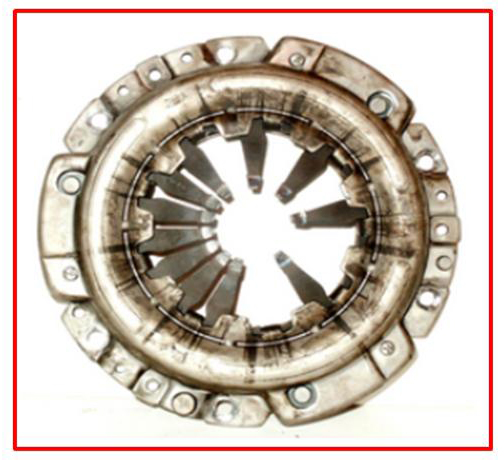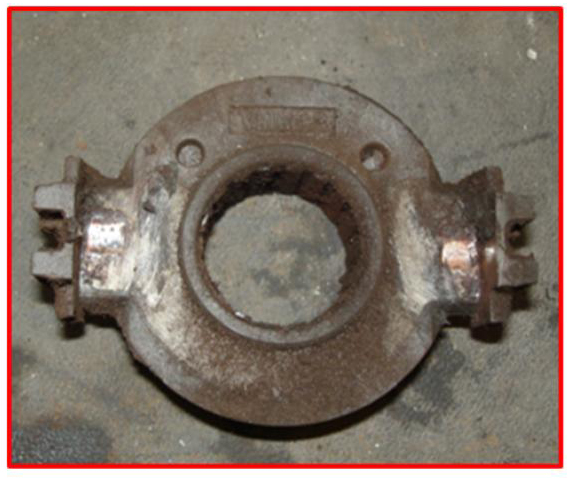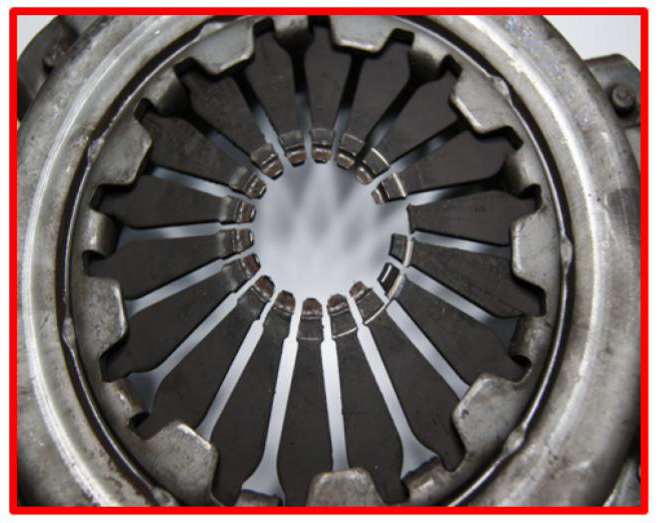For vehicles employing a conventional release mechanism (such as release arm/fork and bearing), one of the most common causes of secondary clutch replacement is a worn or faulty clutch release mechanism. Valeo explains how to spot release mechanism failure.
It is advised that, during a clutch change, the vehicle’s release mechanism should be checked and the components replaced where necessary. Failure to perform efficient diagnosis of the clutch release mechanism can lead to vehicle difficulties and premature failure of the clutch and/or, in extreme circumstances, the transmission and associated components. This is due to the release mechanism becoming worn or fractured over time.
Components such as pivot bushes and guide tubes should be checked and replaced within the release mechanism. Always check the correct movement of the release bearing and its stroke (to do this, make sure the condition of the control system state/setting of the cable, fork, ball, transmitter and receiver, pedal height) is in tolerance according to vehicle manufacturer recommendations.
When fitting the clutch release bearing, rotate the clutch fork to its highest position and mount the bearing over the guide tube carefully. For the majority of bearings, ensure you rotate the clutch fork arm backwards towards the gearbox and slide the bearing under the fork at the same time. If you carry out the procedure this way, it won’t break off the small retaining clips on the bearing.

It is possible to inadvertently move the actuating arm forward whilst trying to get the input shaft of the transmission to line up with the clutch. If the lever is moved forward enough, it will misalign the bearing on the guide tube and it will not be correctly positioned on the clutch fork. This will be visible on the bearing and will result in preload on the pressure plate fingers.
Be careful not to move the lever prior to installation. If this is done, it may require that the gearbox be lowered from the vehicle and the release bearing be realigned. Release mechanism failure can manifest itself in a number of ways:
Diaphragm springs broken
Perception – Impossible to change gear.
Problem – The diaphragm fingers have cracked and broken away from the cover.
Cause – Too much bearing force applied during clutch operation. Check the correct movement of the release bearing and its stroke. To do this, make sure the condition of the control system (state of the cable, fork, ball, transmitter and receiver, pedal height) is in tolerance.
Misaligned release bearing
Perception – Noisy and difficult to change gear.
Problem – The bearing is not making correct contact with the cover diaphragm fingers.
Cause – It is possible to inadvertently move the actuating arm forward whilst trying to get the input shaft of the transmission to line up with the clutch. If the lever is moved forward enough, it will misalign the bearing on the guide tube and will not be correctly positioned on the clutch fork.


Worn release bearing face
Perception – Noisy and jerky clutch pedal.
Problem – The bearing is not making correct contact with the cover diaphragm fingers.
Cause – The clutch release control system is not operating within tolerance. Components within the clutch release control system (clutch cable, hydraulics, fork, arm, bushes, guide tube) may be worn or faulty.
Worn diaphragm fingers
Perception – Noisy, difficult to change gear or unable to select gears.
Problem – The bearing is not making correct contact with the cover diaphragm fingers.
Cause – Misalignment of the release bearing during fitment.
In these instances mentioned above, the fault is often falsely misattributed to the clutch, when in fact the vehicle release mechanism is at fault. To ensure a trouble-free clutch replacement and to optimise the lifetime of the clutch and associated components, Valeo recommends a thorough inspection and diagnosis of the clutch release mechanism and clutch control components.











